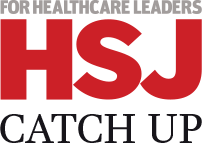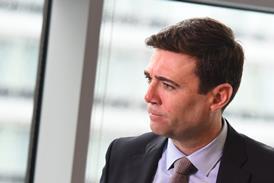With patients as trusted equals in decision making, Sussex MSK Partnership (Central) appointed the first patient director in the NHS to facilitate patient partnerships for improvement and governance, says David Gilbert

Three years ago, Sussex Musculoskeletal Partnership (Central) made the brave decision to appoint the first patient director in the NHS. This is an executive role, alongside clinical and operational director, with the aim of ensuring that we have the systems, processes and culture to focus on what matters to people who use our services.
One element of the patient director’s portfolio is patient and public engagement. But, we wanted to do it differently.
This is because traditional approaches to patient and public engagement have often failed. They have been reliant on slotting undervalued “representatives” into narrow institutionally defined mechanisms, or have merely been about gathering feedback.
These approaches have thus excluded people from providing their wisdom and insight and have had little impact, buffered people from influence and power, and served to maintain the status quo.
Just as we need new models of care delivery, so we need fit-for-the-new-era patient partnerships for improvement and governance, with patients as trusted equals in decision making.
Our approach is based on assumptions, including:
- People with experiences of living with long term conditions or life changing illness, injury or disability bring wisdom and insight from the caves of suffering.
- Those same people can help practitioners and organisations as trusted partners in their work and to improve experiences and quality.
- We will develop systems, processes and a culture that values and embeds this work, so that any activities undertaken (data gathering, engagement work) has impact and is sustainable.
Patient partners
This work has been developed during a period of intense operational pressures. During the last three years, the Partnership has transformed the way MSK services are delivered (through a Lead Accountable Provider model – see box). And patient partners have been alongside us as we have done so.
When we formed our pool of patient partners – eight people with MSK conditions, valued, paid (the NHS England recommended £150 per day plus expenses), trained and supported (with monthly reflective sessions) – we had our sights on how they could move into the heart of decision making.
We wanted them eventually to be at every multidisciplinary team, the regular meetings of practitioners overseeing quality in each of our musculoskeletal pathways (orthopaedics, rheumatology, pain management, physiotherapy).
We wanted patient partners eventually to be at every multidisciplinary team, the regular meetings of practitioners overseeing quality in each of our musculoskeletal pathways
The first step was for the patient director to identify opportunities for meaningful engagement and ensure their presence in improvement and redesign work. Then to be clear that they were more than storytellers or to feed back on their experiences (we had other data for that). They stayed in the room, proving themselves well able to reframe problems, generate new solutions, model collaborative leadership and shift dynamics.
Patient partners have been involved in seven major improvement programmes – pain services redesign, fibromyalgia pathways, development of patient reported outcome measures, plans for shared decision making, administrative systems, support for receptionists and call handlers and integration of physical and mental health provision.
Slowly, they have become trusted equals. It has not been easy and is dependent on clarity of role, shared understanding of purpose, demonstrating benefits and the perennial time, money, space and trust… all things the NHS has precious little of.
Next step
We are ready for the next step – for partners to move from an “improvement” role into a more steady-state governance role. However, given inevitable resource constraints, we realise that we cannot support two patient partners in each of our eight MDTs. So, patient partners have come up with a different approach.
In recent months, they have been talking to Kieran Barnard, our lead for the “hip and knee” pathway. Together, they came up with the idea of a pilot “special MDT”. This might model the sort of reflective dialogue they want to demonstrate and focus on issues of quality and patient experience. We would evaluate the work and see whether it could be a model for other pathways.
We are ready for the next step – for partners to move from an “improvement” role into a more steady-state governance role
Meanwhile, we have been gathering data on patients’ experiences in various ways. We can move from the mechanics of gathering and analysing data for corporate reporting and want to feed relevant data to the right teams and use that data for improvement. One place into which we should be feeding that data is the MDT.
Finally, after much hard work by many people, we can bring these two “arms” of the work together – the people and the data. We are almost ready to pilot that “special” MDT and bring staff and patient partners together to eye the data, discuss what it means (not just relying on professional interpretations), generate ideas together and make decisions about next steps.
Special MDT
Last week, Jenny, one of our patient partners, and I went to meet MDT members to explain what we have been doing and see whether people were interested in the “special MDT” idea.
Like many well-intentioned plans, we were left with 15 minutes rather than the intended 30 on the agenda! However, we were delighted when practitioners stayed behind to discuss collaboration. They wanted more – to hear about experiences, talk about patient and staff assumptions and explore difficult issues. They wanted patients as part of the team, they wanted to find a way forward. They seemed hungry for time and space to reflect together (and “together” meant with patients!).
At the next MDT, we will have an hour’s “protected time” for an agenda that will include exploration and dialogue around a particular issue concerning quality, safety or experiences.
We were delighted when practitioners wanted more – to hear about experiences, talk about patient and staff assumptions and explore difficult issues
We will also discuss whether and how we can ensure patients are part of regular MDTs. Several other clinical leads are watching this experiment with interest. And it could pave the way for a different model of reflective governance across the Partnership.
It has taken three years for this work to take off – the role of patient director is still novel, this particular model of patient partnership an experiment. It has taken months of building relationships, doing the ground work and making the case for a different model of engagement.
In the current frenzy surrounding NHS policy and practice, it is worthwhile remembering that long term improvements take time, space and trust. There are no quick fixes.
The Sussex Musculoskeletal Partnership (Central) receives GP referrals for people who have joint, muscle or bone problems. The service stretches from Brighton and Hove through Mid-Sussex and Horsham to Crawley. Clinicians screen referrals, and many are offered an appointment at our “specialist” clinics, with “advanced MSK practitioners” or physiotherapists (often working alongside consultants and others, such as pain management specialists or psychologists).
The Partnership is a “Lead Accountable Provider”. It comprises Sussex Community Foundation Trust, Sussex Partnership FT, HERE (a social enterprise) and The Horder Centre (a charity). In autumn 2015, three clinical commissioning groups pooled a total of £50m per year for five years to the Partnership, so we could run a better system for people who use services.
In terms of care, we want to get it “right first time” so that people do not have to go here, there and everywhere for different diagnostic and treatment interventions. Moreover, we want patients to be “in control”, ensure that we focus on what matters to people who use our services, embed “shared decision making” and support people to live well and manage their conditions as well as possible.
































1 Readers' comment